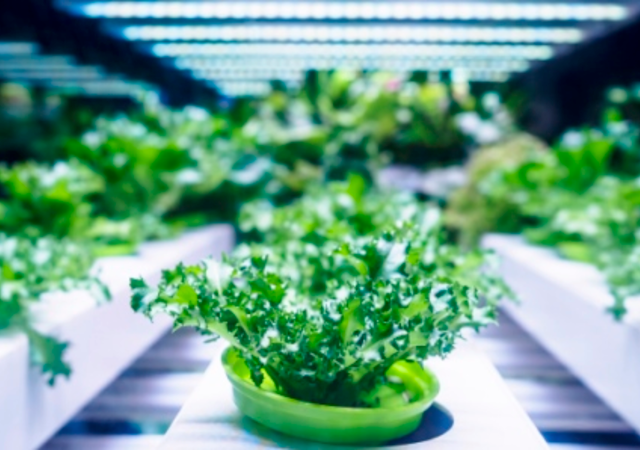Indoor Horticulture Lighting a Budding Industry

Commercial indoor plant cultivation and processing is not a new idea. Legislative changes over the past few years have resulted in a growth of indoor horticultural industries. While a potential boon to the economy, these new business ventures can present safety risks to people and property. The light emitted from grow lights can damage eyesight and the cultivating environment can be detrimental to electrical equipment.
In the United States, the 2020 National Electrical Code (NEC)® Article 410, Part XVI Specific Provisions for Horticultural Lighting Equipment and Section 410.172, requires lighting equipment identified for horticultural use to be Listed but does not specify a Certification (Listing) standard for them.
With these considerations in mind, code authorities are presented with challenges when determining code compliance and public safety of these unique facilities. UL has introduced solutions to address many of the safety concerns that arise with the use of horticultural lighting.
Horticultural luminaires
Luminaires used for growing plants are highly specialized. Equipment installed in a horticultural environment is commonly exposed to dust, water spray, high humidity levels and high ambient temperatures. To maximize plant growth, horticultural lighting equipment can be designed with flexible cord and plug supply connections in lieu of permanent connection to make them adjustable.
Horticultural lighting equipment also produces light wavelengths and intensities different than those needed for general illumination, and requires additional protection against light exposure.
UL Certifies (Lists) these types of luminaires under the product category Horticultural Luminaires (IFAU). The basic Standard used to Certify (List) these products is UL 8800, the Standard for Safety for Horticultural Lighting Equipment.
UL 8800 expands on the general safety requirements of ANSI/UL1598, the Standard for Safety of Luminaires, and includes additional requirements for construction and resistance to environmental conditions for lighting structures used to position and support horticultural luminaries.
Certified (Listed) luminaires for horticultural use are further evaluated for photobiological safety to verify that the light source does not pose a risk of optical injury to persons due to exposure necessary for the normal operation, maintenance and servicing of the horticultural lighting equipment. The UL guide information and Certifications (Listings) for IFAU can be located on UL Product iQ™ at productiq.UL.com and enter IFAU at the keyword search.
Horticultural lighting systems
In addition to horticultural luminaires, UL can certify (list) complete horticultural lighting systems under the product category Horticultural Lighting Systems (HRTI). This category covers factory-built horticultural lighting systems specifically intended for growing flowers, vegetables and other plants, and is intended for installation in accordance with the NEC.
Horticultural lighting systems consist of either free-standing frame structures or enclosed cabinets (non-walk-in) incorporating or having provisions for one or more luminaires and other systems elements, such as controls, plumbing equipment (including pumps, valves, water lines, water reservoirs, etc.), power supplies, fans, and heating/cooling components. These lighting systems may include hydroponic, aeroponic, aquaponic and other forms of irrigation systems.
These lighting systems are investigated for compliance with UL 8800. The UL guide information and any Certifications (Listings) for HRTI can be located on UL Product iQ at productiq.UL.com and enter HRTI at the keyword search.
This article was updated from the original in the Code Authority Electrical Connections Fall 2018 Issue.